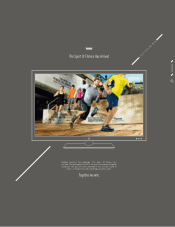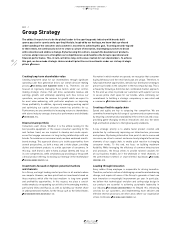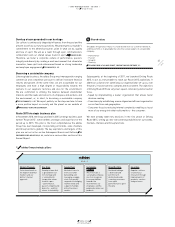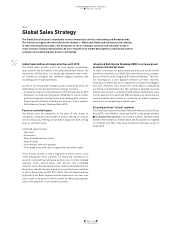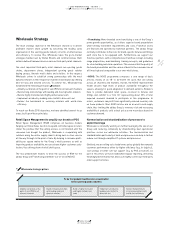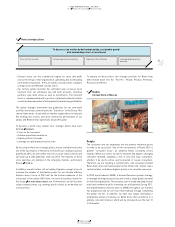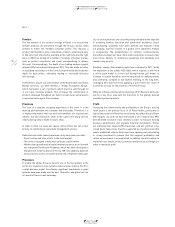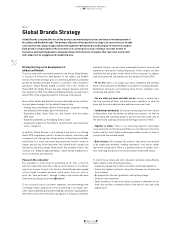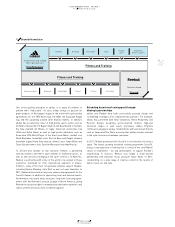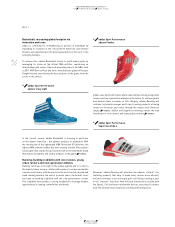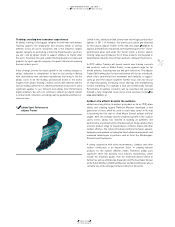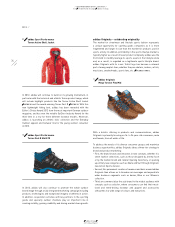Reebok 2011 Annual Report Download - page 70
Download and view the complete annual report
Please find page 70 of the 2011 Reebok annual report below. You can navigate through the pages in the report by either clicking on the pages listed below, or by using the keyword search tool below to find specific information within the annual report.
adidas Group
2011 Annual Report
GROUP MANAGEMENT REPORT – OUR GROUP
66
2011
02.2 Global Sales Strategy Retail Strategy
02.2
Product
The key element of our product strategy in Retail is to ensure that
relevant products are presented through the Group’s various retail
formats to match the intended consumer profile. This requires a
product offering that is price-competitive, simple to understand, easy
to find and, most importantly, available at the right time and the right
place. In 2010, we kicked off a number of strategic initiatives in areas
such as product assortment and visual merchandising to achieve
this goal. Correspondingly, the depth of our trading analysis against
relevant KPIs has matured throughout 2011. This has made us better
at displaying our products in the correct proportionality and in greater
depth for best-sellers, ultimately leading to increased full-price
sell-through.
Furthermore, as part of a joint initiative of the Global Sales and Global
Brands functions, we have defined a “Global Foundation Range”,
which represents a set of products which must be sold through all
of our sales channels globally. This increases the commonality of
products displayed throughout our 2,401 concept stores and presents
a consistent message to the consumer.
Premises
The start of a pleasant shopping experience is the store. It is the
meeting point between the consumer and the brands. Therefore, it is
of highest importance that our retail environments are inspirational,
athletic, fun and interactive, while at the same time being laid out
clearly and logically to make it easy to shop.
In order to drive our sales per square metre, Retail has set a clear
priority on optimising its real estate management process.
Dedicated real estate teams have been set up who make sure that:
– Store location and store size fit to the local market.
– The store is designed to maximise sales per square metre.
– Market share growth and increased market presence are in line with
our Integrated Distribution Roadmap, which has been developed to
evaluate real estate locations in the top 100 cities globally, based on
various factors such as consumer profile and competitive landscape.
Processes
To enable the adidas Group to become one of the top retailers in the
world, it is essential to have systems and processes in place that fit to
a retail business model. Accordingly, significant investments in retail
systems have been made over the past 12 months, and global roll-out
of several of these is well underway.
Our in-store operations are constantly being refined with the objective
of achieving flawless execution and operational excellence. Visual
merchandising standards have been defined and manuals rolled
out globally, and the creation of a global store operations manual
is progressing. The establishment of common communications
procedures between our back-office teams and stores to ensure clear
and concise delivery of commercial guidelines and standards also
remain a key priority.
Similarly, supply chain enhancements have continued in 2011, led by
the expansion of the adidas NEO label, which requires a shift from
a sell-in push model to a more sell-through-driven pull model, to
increase in-season flexibility, be more responsive to changing trends
and, ultimately, compete in fast-fashion retailing. In the long term,
leveraging best practices from applying a pull model will result in
economies of scale for the activities of the entire Group.
While all of these activities will be ongoing in 2012, Russia in particular
will be a key focus area with the transition to the globally defined
standard systems template.
Profit
Increasing the commerciality and profitability of the Group’s existing
retail assets is the primary focus of all Retail teams, particularly in
light of the pivotal role Retail has in achieving the adidas Group’s Route
2015 targets. As such, we have introduced a set of operational KPIs
benchmarked to best-in-class retailers in order to measure existing
business performance and evaluate potential investments. Stores
not achieving their required KPIs have been, and will continue to be,
closed down. New stores must be supported by a business plan that
meets predefined criteria. Each new store opening and remodelling
is closely monitored to ensure that the targeted profitability and
return on investment is accomplished. In addition, we will continue to
implement our people, product, premises and processes strategies in
order to maximise profit.





